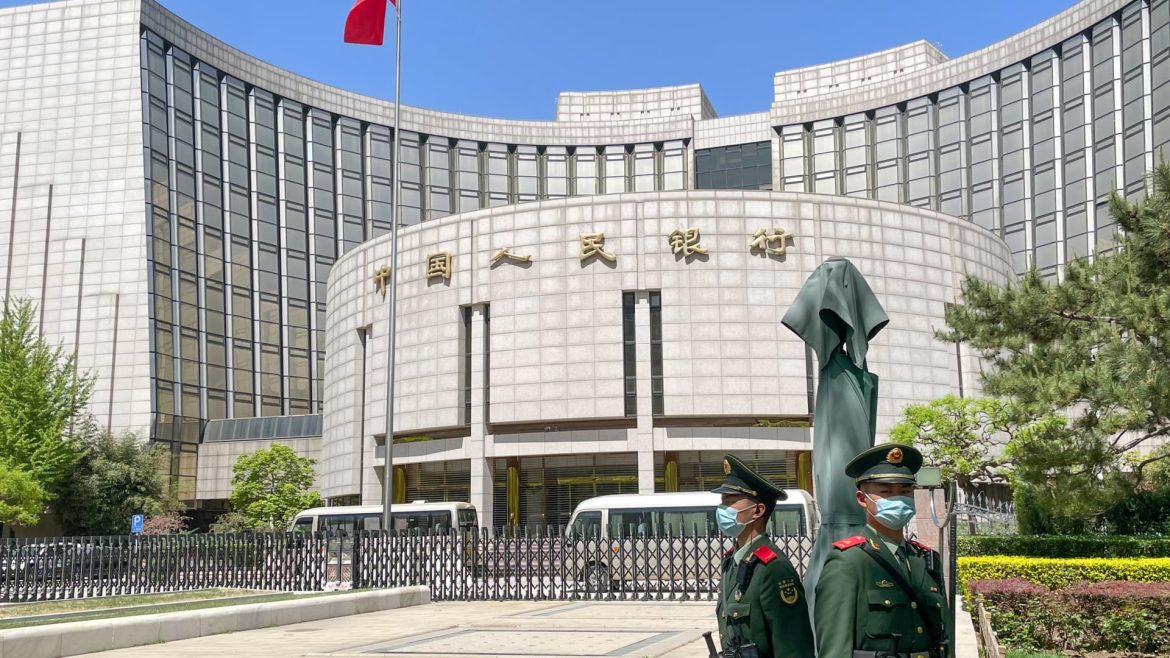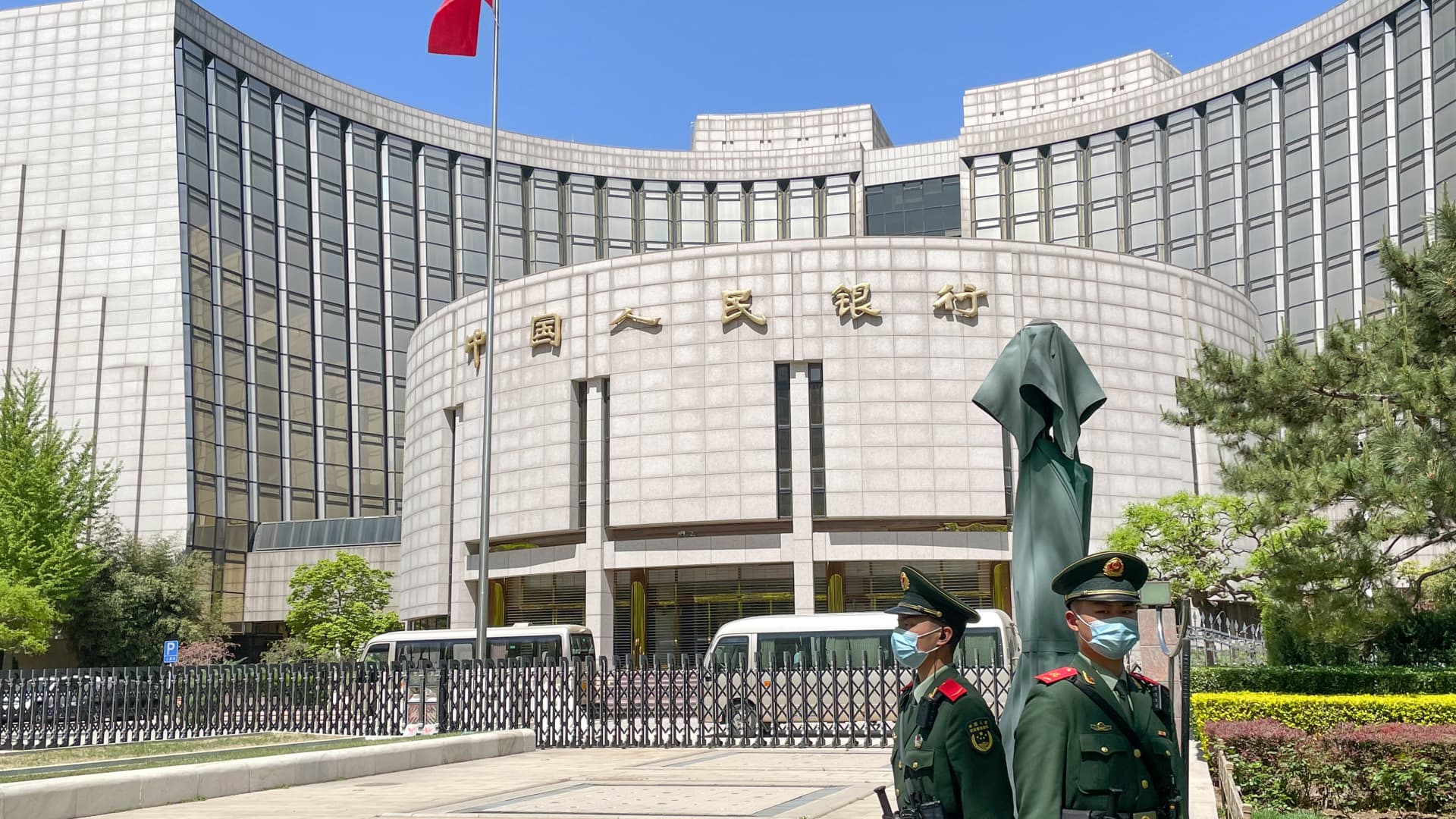China’s Steady Hand: Navigating Softening Consumer Sentiment with Unchanged Lending Rates
The Calm Before the (Potential) Storm: An Introduction
In the intricate dance of economic policy, timing and precision are paramount. The People’s Bank of China (PBOC) has recently chosen to maintain its key lending rates despite a backdrop of softening consumer sentiment and moderate economic growth. This decision, while seemingly counterintuitive to some, reveals a nuanced strategy aimed at balancing immediate economic needs with long-term stability. To understand this approach, we must examine the multifaceted factors influencing China’s economic landscape and the rationale behind the PBOC’s calculated decision.
Understanding the Loan Prime Rate (LPR): The Heartbeat of Lending
At the core of China’s monetary policy lies the Loan Prime Rate (LPR), a benchmark interest rate that dictates the cost of borrowing for businesses and consumers alike. The LPR is not a single rate but a spectrum, with the 1-year LPR influencing short-term loans and business investments, and the 5-year LPR affecting mortgages and long-term financial commitments. The PBOC’s decision to keep the 1-year LPR at 3.0% and the 5-year LPR at 3.5% is a deliberate choice, reflecting a deep understanding of the interconnected nature of China’s economy.
The LPR is more than just a number; it is a barometer of economic health. By maintaining these rates, the PBOC is sending a signal to the market: a signal of stability amidst uncertainty. This stability is crucial for fostering an environment where businesses can plan for the future and consumers can make informed financial decisions.
The Weight of Softening Consumer Sentiment
Consumer sentiment is the pulse of any economy. When consumers feel optimistic, they spend, invest, and drive economic growth. However, when sentiment wanes, the ripple effects can be profound. China is currently experiencing a period of softening consumer sentiment, a phenomenon influenced by a confluence of factors:
- Real Estate Concerns: The property sector, once a cornerstone of China’s economic growth, is facing significant headwinds. Debt-laden developers and fluctuating housing prices have created a climate of uncertainty, causing potential homebuyers to adopt a wait-and-see approach.
- Global Economic Headwinds: The global economy is a complex web of interconnected markets. Geopolitical tensions, trade uncertainties, and a global slowdown have all contributed to a more cautious outlook among Chinese consumers.
- Demographic Shifts: China’s aging population and declining birth rate present long-term challenges. With a shrinking workforce and an increasing elderly population, the dynamics of consumer spending are shifting, requiring adaptive economic policies.
- Zero-COVID Aftershocks: The lifting of stringent zero-COVID policies has brought relief, but the aftermath has left lingering effects. Businesses are still recovering, employment patterns are evolving, and consumer behavior is adjusting to a new normal.
Why Hold Steady? A Balancing Act
Given the softening consumer sentiment, the decision to maintain lending rates may seem puzzling. However, a closer examination reveals a strategic approach aimed at achieving a delicate balance:
- Inflation Management: While China is not grappling with the same inflationary pressures as some Western economies, the PBOC remains vigilant. Lowering interest rates could stimulate demand, potentially leading to price increases. By holding rates steady, the PBOC is mitigating this risk.
- Currency Stability: Interest rates and currency values are intrinsically linked. A reduction in rates could weaken the Yuan, making Chinese exports more competitive but potentially leading to capital outflows. The PBOC’s decision reflects a commitment to maintaining a stable exchange rate.
- Financial Stability Concerns: Aggressive rate cuts could exacerbate existing debt problems, particularly in the property sector. The PBOC is acutely aware of the risks associated with financial instability and is prioritizing stability over immediate stimulus.
- Targeted Measures: The PBOC may prefer to employ targeted measures, such as sector-specific lending programs or fiscal policies, to address specific economic challenges. This approach allows for more precise interventions without the broad-based impact of interest rate changes.
- Observation and Assessment: The PBOC is likely taking a “wait and see” approach, allowing time to assess the full impact of previous stimulus measures and other policy interventions. This cautious stance ensures that any future adjustments are based on real-time economic data.
Slightly Better-Than-Expected: A Glimmer of Hope
Amidst the challenges, there are signs of resilience. Recent reports of slightly better-than-expected second-quarter economic data provide a glimmer of hope. This modest improvement may have influenced the PBOC’s decision to hold rates steady, suggesting that the economy is not in immediate need of drastic intervention. However, it is essential to recognize that this improvement may be temporary, and sustained growth requires addressing underlying structural issues.
The Broader Economic Implications: Ripples in the Pond
The PBOC’s decision to maintain unchanged lending rates has far-reaching implications for various sectors of the Chinese economy:
- Real Estate: The property sector, already facing significant challenges, may not receive the immediate boost it needs from lower borrowing costs. This could lead to continued pressure on developers and potentially impact housing prices.
- Manufacturing: While lower interest rates could have helped manufacturers invest and expand, the unchanged rates may not significantly hinder their operations, especially if global demand remains stable.
- Small and Medium-Sized Enterprises (SMEs): SMEs, which are crucial for job creation and economic growth, often rely on borrowing to fund their operations. The unchanged rates could make it slightly more challenging for them to access affordable credit.
- Consumer Spending: With consumer sentiment already weak, the unchanged rates may not provide the necessary impetus to encourage increased spending. This could result in continued moderate growth in the retail sector.
- Financial Markets: The decision is likely to have a limited immediate impact on financial markets, as it was largely expected. However, any future shifts in the PBOC’s stance could trigger significant market reactions.
Alternative Strategies: Beyond Interest Rates
While maintaining lending rates steady, the PBOC has a toolkit of alternative strategies to stimulate the economy and boost consumer sentiment:
- Fiscal Policy: Increased government spending on infrastructure projects, social programs, and tax cuts can provide a direct boost to economic activity and consumer confidence.
- Regulatory Reforms: Easing regulations on businesses, particularly in key sectors, can encourage investment and innovation.
- Targeted Lending Programs: Providing subsidized loans to specific sectors, such as technology or green energy, can stimulate growth in strategic industries.
- Promoting Consumption: Implementing policies to encourage consumer spending, such as subsidies for certain purchases or tax incentives for savings, can help revitalize the retail sector.
- Boosting Confidence: Implementing measures to restore confidence in the property market, such as supporting financially distressed developers or providing guarantees to homebuyers, can help stabilize the sector and improve overall sentiment.
A Calculated Risk: The Road Ahead
The PBOC’s decision to hold lending rates steady represents a calculated risk. While it avoids potentially exacerbating existing financial vulnerabilities, it also forgoes the immediate stimulus that lower rates could provide. The success of this strategy hinges on several factors:
- Global Economic Recovery: A strong global economic recovery would boost Chinese exports and provide a significant tailwind to economic growth.
- Effective Implementation of Fiscal Policies: The effectiveness of government spending and tax policies will play a crucial role in stimulating demand and boosting consumer confidence.
- Successful Management of Real Estate Risks: Containing the risks in the property sector is essential for maintaining financial stability and preventing a wider economic slowdown.
- Continued Monitoring of Economic Data: The PBOC must closely monitor economic data and be prepared to adjust its policies if necessary.
The Steady Hand: A Conclusion
In conclusion, the People’s Bank of China’s decision to maintain unchanged lending rates amidst softening consumer sentiment reflects a deliberate and cautious approach to economic management. Rather than resorting to aggressive stimulus, the PBOC is prioritizing financial stability and carefully weighing the potential risks and rewards of different policy options. This steady hand on the wheel of economic policy is a testament to the PBOC’s commitment to long-term stability and sustainable growth. As China navigates the choppy waters of a complex economic landscape, the world watches closely, recognizing that the choices made today will shape the economic trajectory of tomorrow. The journey ahead is uncertain, but with a steady hand at the helm, China is poised to weather the storm and emerge stronger.





